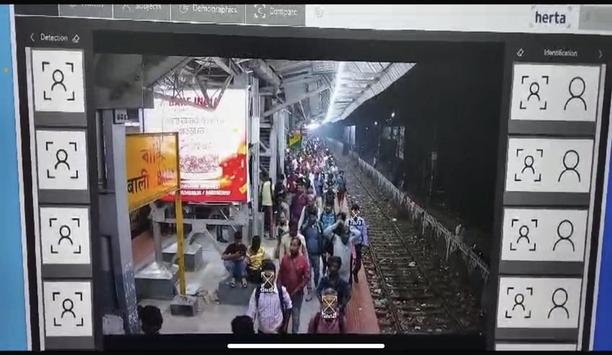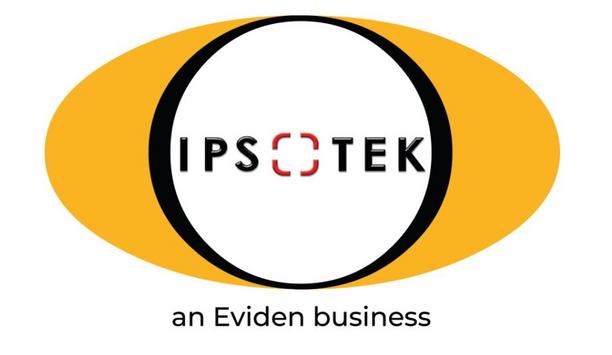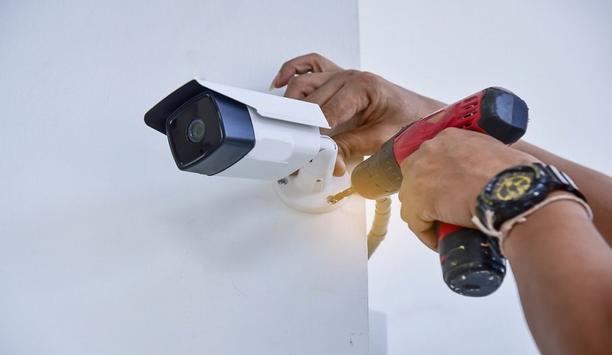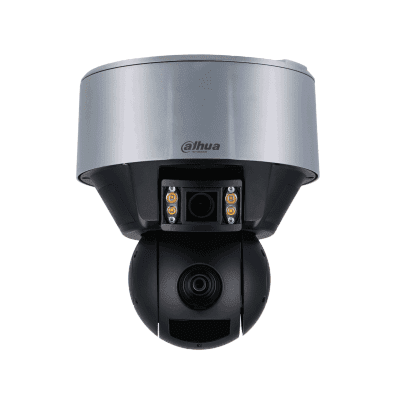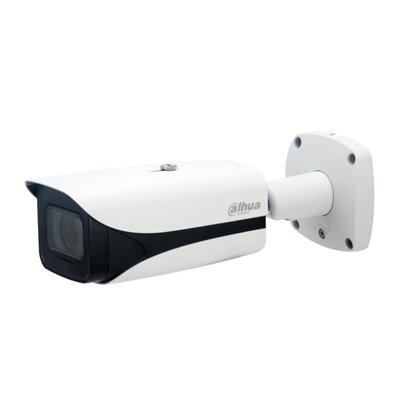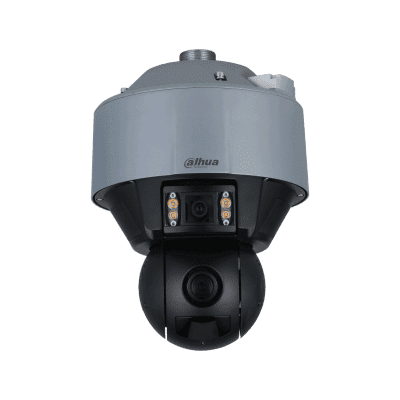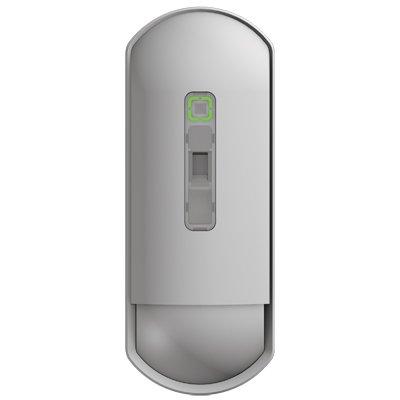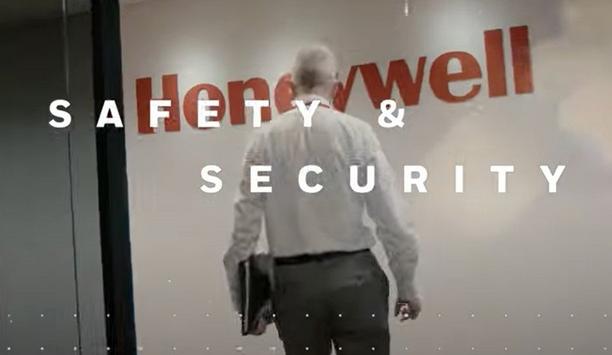Human area network
iDenfy, a global pioneer in identity verification and fraud prevention, announced a new partnership with Coast, an innovative blockchain platform simplifying crypto-to-fiat transactions on PulseChain. This partnership will focus on enhancing security and streamlining KYC/AML compliance processes while boosting the platform’s security and addressing critical challenges in the blockchain ecosystem. Securing decentralised finance This partnership represents a crucial step forward, equippin...
In a powerful show of solidarity, the U.S. security industry gathered for a crucial information-sharing webcast concerning recovery efforts for the Los Angeles-area wildfires disaster. Hosted by the Security Industry Association (SIA) and coordinated by Elite Interactive Solutions Marketing Director Scott Goldfine — with official endorsements from the Electronic Security Association (ESA), The Monitoring Association (TMA) and PSA Security Network (PSA) Collaborating for wildfire re...
LogiMAT 2025 is hosting a Mobile Robotics User Forum to complement the AGV and AMR solutions on display in Hall 8. Experts from Forum AGV will offer visitors a broad program of information and personal consultation in five categories covering the current trends in how AGV systems and AMRs are deployed. Pre-registration is requested. Mobile robotics is a topic of growing importance for those seeking efficient material flows in intralogistics. But potential users are often daunted by the prospect...
In Indonesia, cybersecurity stands as a critical concern, despite its relative insulation from global advanced persistent threats. Nevertheless, cyber-attacks persist, impacting citizens and government institutions alike. As businesses transition to digital platforms, the increased implementation of transformative technologies introduces a slew of security risks, endangering critical infrastructure and sensitive data. The Indonesia Cybersecurity market is projected to grow from US$ 2.05 billion...
Fime has supported ELAN Microelectronics, a global pioneer in human-machine interfaces, in achieving FIDO Biometric Component Certification for its fingerprint authentication solution. FIDO authenticators can now integrate the sensors to further strengthen customer authentication and support the industry drive to reduce the world’s reliance on passwords. Access to digital services The use of a certified biometric component is optional for level 1 and level 2 FIDO authenticators The FID...
Security technology has witnessed huge advancements in recent years, particularly for those protecting critical assets or information. Facial and fingerprint recognition, ANPR and even 'mac addresses' or a person of interest's gait, now all make up the technology toolbox of forward-thinking organisations' security policy. However, humans remain the weakest link in any security chain, and the only way to correct this is to eliminate the human burden, argues Richard Hilson, head of sales for secu...
News
adCAPTCHA, the specialist security verification platform, has partnered with the agency Wild Parrot to reach 99 percent bot stoppage across its web platforms. Wild Parrot, a dynamic web builder agency, faced bot infiltration across their web platforms, disrupting user experiences and compromising security for numerous Wild Parrot clients. Impact of bot-driven activities Wild Parrot selected adCAPTCHA for its proven track record and innovative path to blocking bot activity This widespread issue led to distorted web analytics, increased vulnerability to malicious attacks, and a significant decline in the overall integrity of their digital environments, which not only undermined client trust but also required substantial resources to mitigate the negative impact of bot-driven activities. Wild Parrot selected adCAPTCHA for its proven track record and innovative approach to blocking bot activity. This solution offers a reliable, foolproof mechanism that integrates with existing web infrastructure, providing a seamless user experience for legitimate visitors while deterring automated threats. Wild Parrot’s dedication Ben Green, Chief Revenue Officer at adCAPTCHA, commented: “We’re delighted to collaborate with Wild Parrot in addressing the critical issue of bot infiltration that has plagued so many digital platforms. This partnership signifies our shared commitment to elevating user security and enabling authentic interactions in the digital space." "Wild Parrot’s dedication to delivering seamless online experiences perfectly aligns with our mission to provide reliable, human-verified protection, and we can’t wait to see the impact of our combined efforts, to drive even greater value for businesses together.” Web security standards The implementation of adCAPTCHA is set to deliver substantial improvement and enhance security The implementation of adCAPTCHA is set to deliver substantial improvement and enhance security for a better experience for users. Through adCAPTCHA’s human verification tools, Wild Parrot should expect to see a dramatic reduction in bot interference, along with streamlined infrastructure costs and improved client engagement. The success of this partnership so far has left both companies optimistic about the potential for further collaboration to maintain and elevate web security standards for their clients. adCAPTCHA’s innovative tools Jon Rose, Technology lead at Wild Parrot, commented: “We are thrilled to partner with adCAPTCHA in addressing one of the most pressing challenges we face in today’s digital landscape, that is bot infiltration. Authentic user experience is at the heart of what we do, and it’s our number one priority to ensure this is seamless and secure." "adCAPTCHA’s innovative tools have already shown promising results in protecting our platforms while maintaining the intuitive, user-friendly experience that our customers expect." New standards for web security Rose added: "By reducing bot interference, we can now provide more accurate analytics, bolster security and rebuild the trust our clients place in us to manage their digital environments." "Looking at what we’ve achieved so far makes us excited to continue this partnership and set new standards for web security and user engagement, to reach a safer and more authentic digital future.”
adCAPTCHA, a new specialist security verification platform, has launched with £1m funding to tackle the ‘bots epidemic’ and protect organisations against cyber fraud. The London-based company, founded by industry veteran and entrepreneur Alfie Scarborough, equips organisations with the capability to identify and block bots through its sophisticated in-house developed patent-pending human verification technology. Layered security solution adCAPTCHA’s layered security solution leverages the infinite variation and constant change of media adCAPTCHA’s layered security solution leverages the infinite variation and constant change of media, generates billions of unique pathways, as well as behavioural analytics capabilities. It is estimated that 50 percent of global web traffic is made up of bots, with leading brands losing millions every day due to fraudulent views and impressions from non-existent customers. Human verification process The platform has been crafted to allow marketers and branding professionals to protect against online fraud, with bot-enabled false impressions repeatedly draining marketing budgets and resources. adCAPTCHA also allows brands to optimise the human verification process for advertising and cross-selling new products and services. The platform’s APIs also provide users with the ability to integrate into CMS and media libraries. Angel investors and entrepreneurs The verification system includes swipe to complete, puzzle piece and gamification tools The verification system includes swipe to complete, puzzle piece and gamification tools to confirm if the user is human. The company’s £1m funding, provided by a series of angel investors and entrepreneurs, will allow adCAPTCHA to develop its global offering, targeting the UK and US markets as well as Europe. Era of human verification technology Alfie Scarborough, Founder and CEO of adCAPTCHA said: “The verification market is plagued by poorly performing products that fail to accurately distinguish between bots and humans. The status quo leaves brands open to major cyber-attacks, unlimited spam as well as decimated marketing budgets." "Our offering will change all that – giving brands a comprehensive solution to identify and block bots, whilst empowering dynamic brand advertising to engage customers. Our mission is to usher in a new era of human verification technology and set the industry standard for the future.”
Cohesity, a pioneer in AI-powered data security and management introduced a patent-pending visual data exploration capability to Cohesity Gaia, its first-to-market AI-powered search assistant launched earlier in 2024. By providing customers with a visual categorisation of the themes across documents and files within a data set, the visual data explorer brings new context to the data and suggests queries that help users gain insights faster. Challenges with the traditional approach With traditional approaches, enterprises often struggle to gain insights across unstructured data and text. This challenge only grows as the amount of unstructured data increases. With unstructured data representing more than 80 percent of all corporate data, companies are often forced to run queries and compile reports based on a small subset of data, the information stored in structured systems. As a result, reports and analyses may be incomplete or inaccurate, with valuable insight still locked inside disparate unstructured systems. Cohesity Gaia The solution indexes and provides insight based on data stored in many popular formats Cohesity Gaia brings the power of generative AI to enterprise data, dramatically improving the speed and quality of insights available for a variety of use cases. The solution indexes and provides insight based on data stored in many popular formats, including emails, documents, PDFs, text files, spreadsheets, HTML, XML, and presentations. Gain insights faster with auto-generated themes and topics One of the biggest challenges users face when working with vast datasets is having access to data but not knowing where to begin or what valuable insights can be retrieved. Cohesity Gaia overcomes this by automatically providing a visual representation of the data, sorted by themes, giving users a clear starting point. New visual explorer The new visual explorer uses topic modeling, a set of advanced AI techniques with natural language processing, to instantly identify hidden thematic structures across documents and files. This deep insight and context into the nature of the data offer a framework for better understanding, empowering users to ask more informed and targeted questions as they search. Context-aware prompts Gaia gives customers insight into their data while keeping it secure and compliant with regulatory requirements The Gaia data explorer further simplifies this process by allowing users to click through each theme, ask conversational questions, and interact with intelligent, context-aware prompts to quickly find the most relevant information. Aligned with Cohesity’s responsible AI commitment, Gaia gives customers insight into their data while keeping it secure and compliant with regulatory requirements. Cohesity will host a series of AI workshops to give customers and prospects a hands-on look at the first-of-its-kind data explorer and learn more about how Cohesity Gaia can help unlock new insights from their business. Data accessibility “By addressing the challenge of managing and extracting insights from unstructured data across disparate systems, Cohesity Gaia and its new visual data explorer have the potential to revolutionise data accessibility for enterprises,” said Chirag Mehta, Principal Cybersecurity Analyst with Constellation Research. “This innovation not only could enhance data security and compliance but could also empower business users of enterprise customers with deeper, more contextual insights, significantly benefiting the decision-making process and operational efficiency.” Access vast amounts with Generative AI Cohesity Gaia uses RAG AI and LLMs to help business users take advantage of information Cohesity has also expanded support for new workloads and data sources within Gaia. Cohesity customers can analyse corporate data protected on the Cohesity platform from Microsoft 365 Mail, Microsoft 365 Sharepoint, and Microsoft 365 OneDrive, as well as on-prem or cloud-based file servers, including popular systems like Dell EMC Isilon, Netapp NAS, physical file servers, and Cohesity Smartfiles. Introduced in February, Cohesity Gaia uses retrieval augmented generation (RAG) AI and large language models (LLMs) to help business users take advantage of the information contained in the data a company has generated. Valuable insights “We developed Cohesity Gaia because we believe that companies should be able to unlock valuable insights from the data they’re spending so much time and so many resources to protect,” said Craig Martell, CTO, of Cohesity. “It should be easy for business users to ask a question about their data and get an accurate, useful result, even if the data resides in disparate locations and different systems or how far back in history it goes. That is the promise of what Cohesity Gaia will deliver.” Artificial intelligence category Cohesity Gaia was recently recognised as a 2024 Tech Innovator by CRN in the artificial intelligence category. The awards spotlight innovative products and services that provide significant technology advances - and partner growth opportunities - across a range of technology categories, including AI and AI infrastructure. The visual data explorer and support for new data sources and workloads will be available in the October release of Cohesity Gaia.
Canon Europe announces its recognition as an Industry pioneer in Quocirca’s prestigious 2024 Print Security Landscape report. This distinction highlights Canon’s commitment to providing globally consistent and innovative security solutions & services for secured print and document management that outpace competitors. The report specifically highlights Canon’s flagship print management platform, uniFLOW Online, as one of the key elements of its security offering, noting its power to support organisations with safeguarding credentials across devices, documents, and data. Quocirca report The report from Quocirca is based on the views of IT decision-makers across the US and Europe (France, Germany, and the UK) and provides insights into the offerings of major print vendors. The resulting market research commends Canon for its continual investment and innovation in this business-critical segment while highlighting the following attributes. Key highlights from the report Broad and comprehensive portfolio: Canon has a mature, security-centric portfolio that embraces hardware, software, and services. Its comprehensive product range includes technology such as the imageRUNNER ADVANCE DX range, which offers built-in advanced security features for example multifactor authentication. Mature print management platform: Canon offers its flagship uniFLOW Online platform – a technology that provides a consistent, standardised approach to security across customers’ print environments. It allows users to print securely from anywhere whilst enabling home printers to be connected for an extra layer of security. Differentiated scan workflow and capture capabilities: Canon has a strong heritage in document capture and workflow, which is bolstered by its advanced document security features. Its information management platform delivers integrated and secure capture and workflow automation, making it the ideal solution for customers looking to advance the security of their print environment beyond devices to encompass document workflow. Integrated IT and print security strategy: Canon offers enhanced capabilities around threat detection, device protection, and secure capture and printing. It also provides superior fleet management tools and device lifecycle security subscription services, alongside detailed health check services for its customers. Security services and solutions Khalid Aziz, Marketing Director, Digital Printing & Solutions, at Canon UK & Ireland comments, “This important report sheds light on the increasingly challenging threat landscape that we are now operating in." "Now, more than ever, we must provide customers with enhanced security solutions & services that seamlessly integrate with their existing IT infrastructure, which are easy to implement and configure. We’re delighted to be recognised by Quocirca as a pioneer in print security which is a testament to our continual innovation and our dedication to delivering solutions that meet and exceed the evolving security needs of our customers."
Data is the new currency in the digital economy. However, organisations face unprecedented challenges with exponential data growth, including performance bottlenecks, a lack of practical data visibility, and increasing cyber threats. Rubrik, Inc., the Zero Trust Data Security company, and Pure Storage, the IT pioneer that delivers the world’s most advanced data storage technologies and services, bring together primary storage, data security, and long-term retention with Rubrik Security Cloud, to arm global customers with a proven reference architecture to ensure uptime and a path forward in the face of growing cyber threats. Cyber resilience, defence in depth By combining key elements of Rubrik Security Cloud and the Pure Storage Platform, enterprises can gain critical Cyber Resilience capabilities with a three-layered defense strategy, which includes: Rapid Recovery: The Pure Storage Platform uses immutable snapshots as the first layer of defense in a three-layered architecture, ensuring rapid recovery and near-zero Recovery Time Objective (RTO) during cyber attacks. With Auto-on SafeMode governance, these snapshots are stored in a secure enclave, accessible only to designated contacts authenticated through Pure Storage Support, providing unmatched performance, durability, and scalability for instant recovery. Data Security: As a crucial second layer for data stored on the Pure Storage FlashArray, the Rubrik Security Cloud offers organisations a cyber resilience platform with compliant immutable and on-site backup via the Rubrik Secure Vault. Additional capabilities–Anomaly Detection, Threat Monitoring, Threat Hunting, Sensitive Data Monitoring, User Intelligence and Orchestrated Recovery–can further accelerate recovery and minimise downtime. Archival Location: The Pure Storage Platform supports the final layer of resilience, delivering massive scale-out and immutable, cost-effective storage designed for rapid recovery, even for data stored over extended periods. Both the performance-optimized FlashBlade//S™ and the economical at scale FlashBlade//E™ can be leveraged for the archival location, offering flexibility based on customer needs. Data management and protection Rubrik Zero report found that 66% of IT and security pioneers believe that data growth is outpacing By 2025, the world is expected to generate 463 exabytes of data daily, making efficient data management and protection a critical priority. A Rubrik Zero Labs report found that 66% of IT and security pioneers believe that data growth is outpacing their ability to secure data and mitigate risk. Approach to cyber resilience "The partnership between Pure Storage and Rubrik couldn't come at a better time with massive data surges and tech disruptions," said Boomchi (Mathur) Kumar, Director Security Consulting - Cyber Resiliency Practice Pioneer at Trace3. "Our global enterprise customers require a joint solution that offers a holistic approach to cyber resilience, giving them the tools necessary to defend against modern cyber threats, ensuring business continuity and recovery at scale."
Bugcrowd, the pioneer in crowdsourced security, has named managed cybersecurity services and solutions provider Cyber Vigilance as a value-added channel partner for the UK. Cyber Vigilance specialises in large-scale, complex cybersecurity projects for tier one banks and telecommunications customers covering endpoints, email, people, web, network, cloud and data security. Cybersecurity resources Toby Butler, Chief Revenue Officer, Cyber Vigilance, said the alliance with Bugcrowd would help customers to overcome ongoing shortages of security personnel and expertise. Butler said: “Retaining and hiring in-house cybersecurity resources is one of the biggest challenges our customers face. Bugcrowd enables them to tap into an extensive on-demand talent pool for critical projects from bug bounty programmes and vulnerability management to pentesting.” “At Cyber Vigilance we pride ourselves on working with partners who are not only disruptive but can solve the immediate challenges our customers face. Working with Bugcrowd we can find and remediate vulnerabilities our customers didn’t know existed.” Bugcrowd's testing services EMEA is a major market for Bugcrowd, which recently secured more than $100 million to fund an international expansion programme. Jacques Lopez, VP of Global Channel Sales and Strategic Alliances at Bugcrowd said: “The UK presents the greatest growth opportunities for us in EMEA. Cyber Vigilance, like Bugcrowd, prioritises both technology and people.” “Their managed services have earned customer trust and provided deep insights into security postures, making them well-positioned to offer Bugcrowd's testing services. Security is a team effort, and strategic relationships are key to Bugcrowd's community-focused approach. Collaborating with partners like Cyber Vigilance allows us to integrate seamlessly into their existing security ecosystems.”


Expert commentary
It’s no secret that the data security sector is constantly changing. It has an annual CGR of about 12.3%. Future trends in data security Much of this has to do with the rise of cybercrime in recent years, with reports showing that cyberattacks happen as often as every 39 seconds. To combat the growing rate of cybercrime, data security has been on the rise. As we journey further into this era, it becomes evident that a spectrum of significant trends is molding the future of data security. This exploration delves into a selection of these trends, unraveling their importance and the potential implications they carry 1. AI security tools will increase Artificial Intelligence is also being used in the development of smart attacks and malware The introduction of Artificial Intelligence in the data security industry brought significant changes, especially in cybersecurity. AI has been the golden standard for face detection, natural language processing, automated threat detection, and automated security systems. Additionally, Artificial Intelligence is also being used in the development of smart attacks and malware, bypassing even the latest security protocols in data control. And as time progresses, AI security tools will flourish and dominate the scene. Let’s take a more in-depth look at three of the top AI security tools. Targeted attack analysis tool Manufacturers utilise targeted attack analysis tools to uncover targeted and stealthy attacks. Artificial Intelligence can be applied to the program’s capabilities, processes, and knowledge. For instance, Symantec launched this tool to combat the Dragon 2.0 attack in 2022. The phishing attack reprimanded multiple energy companies while trying to gain access to their operational networks. Targeted Attack Analysis Tools can analyse incidents and look for similarities from previous situations. They also help detect suspicious activities and collect all the necessary data to determine whether a specific action is malicious. Intercept X tool Results from the Intercept X Tool feature high accuracy and a low false positive rate Sophos, a British security hardware and software company, launched the Intercept X Tool. It engages a neural network that records and analyses data like a human brain. Sophos’ Intercept X Tool can extract features from a single file and perform a deep analysis. It detects malicious activities within 20 milliseconds. Plus, it’s also trained to work on bi-directional sharing and real-world feedback of threat intelligence. Results from the Intercept X Tool feature high accuracy and a low false positive rate. IBM Watson Technology IBM’s QRadar Advisor uses IBM Watson Technology, a unique AI tool for fighting cyber attacks. Artificial Intelligence can auto-investigate activities and indicators for potential exploitation or compromise. With cognitive reasoning, IBM Watson Technology can present critical insights to accelerate the response cycle. Security analysts can utilise this technology to search for threat incidents, reducing the risk of letting them fly under the radar. 2. Blockchain as a security solution It guarantees no points of failure or hackable entrances that can expose datasets inside the system Blockchain is a type of distributed ledger technology (DLT) that aims to establish trust within an untrusting ecosystem. Today it’s one of the most robust cybersecurity technologies in the industry. Blockchain utilises a decentralised ledger system, but your team members can still gain access to transparent information in the cloud. Members can also record, pass along, and view necessary transactional data in the blockchain. The entire blockchain process maintains data integrity within the system while establishing trust among team members. It guarantees no points of failure or hackable entrances that can expose datasets inside the system. Cybersecurity, biometrics Cybersecurity primarily benefits from these features because blockchain can create a secure and robust wall between data and hackers. On top of that, blockchain ledgers can include biometrics like fingerprints and retina scans. These prevent hackers from accessing any private data. Because blockchain is decentralised, it also limits hackable data. Together with the technology’s record-keeping system, each node is provided insight into data manipulation exposing real-time cybercrime attempts. 3. Increased and widened access control Without access control, expect your company to be open to security issues, including theft, data loss, and breach of data Access control is critical in data security. More than a valuable security tool, business leaders can use access control to regulate people accessing any given resource. A company with an IT security setting can control who has the liberty to edit certain files. One of the primary goals of access control is to minimise threats or attacks to organisations and businesses to keep people and data secure. Without access control, expect your company to be open to security issues, including theft, data loss, and breach of data protection laws. Benefits The benefits of increased and widened access control include: Identifying who can access and control your data at specific time intervals. Protecting data from overwriting, accidental deletion, and malicious intent. User permissions that can be readily changed. Compliance and regulation with data privacy laws. Central management of access to data through a reporting portal or a dashboard. Multi-factor authentication Access control comes in various types and systems, so it’s critical to know the features of what you’re looking for. The most common type is multi-factor authentication or MFA. It involves multiple steps before logging in, requiring the user to enter other relevant information besides the password. Some other examples of information include biometrics, answering a security question, or entering a code sent to the user’s email address. Two-factor authentication, role-based access control Two-factor authentication further prevents unauthorised entries that can result in unnecessary data possession Two-factor authentication further prevents unauthorised entries that can result in unnecessary data possession. Another type of access control is role-based access control. In this setup, only one individual can set up access guidelines and grant permissions to specific team members within an organisation. 4. Greater use of the zero-trust security model The zero-trust security model is a framework that requires every user within and outside the organisation to undergo authentication, authorisation, and validation. These are all essential to ensure proper security configuration before access is granted to the company’s applications and data. A zero-trust model assumes that anyone can cause data breaches and that a traditional network edge is not taken into effect. Moreover, it addresses the following modern-day challenges: Hybrid cloud environments. Security of remote workers. Ransomware threats. This framework utilises the combination of multiple advanced technologies, including: A risk-based multi-factor authentication. Endpoint security. Identity protection. Cloud workload technology. The zero-trust model uses all these innovative tools for system identification, user verification, access consideration, and system security maintenance. Constant validation and monitoring Enforcing strict policies and compliance with data privacy laws are also essential Additionally, it also considers data encryption, email security, and asset verification before establishing connections with applications. The architecture of a zero-trust framework requires constant validation and monitoring of the users and the devices they are using. Enforcing strict policies and compliance with data privacy laws are also essential. More importantly, the zero trust architecture requires all organisations to be aware of all their available services and accounts to gain complete control of data handling and manipulation. 5. Increased privacy regulations Privacy regulations and policies guide organisations in proper data control, handling, and security. These policies guide organisations in proper data control, handling, and security. As a responsible business owner, you must comply with these regulations to avoid legal issues. With cybersecurity attacks becoming common, expect increased and stricter privacy regulations to be released in the next few years. While current policies are still taken into effect, various modifications and adjustments will occur to compete with the rising numbers of data breaches, thefts, data loss, and more. California Privacy Rights Act (CPRA) Currently, the California Privacy Rights Act (CPRA) is the most comprehensive legislation on state data privacy. It only started to take effect on January 1, 2023. The CPRA introduces the following principles: Broad individual consumer rights. Significant duties of people who need to collect sensitive and personal information. Additional definitions of data privacy and security. An individual’s duties include releasing information about data collection to concerned data subjects and proper access, correction, and deletion of information. Final thoughts 2023 is a big year for data security. Trends such as increased adoption of zero-trust policies, a greater reliance on AI security tools, and the implementation of blockchain as a security solution are all things we expect to see shortly. Staying up-to-date with these trends is important for keeping your business current and ensuring that you’re adhering to new and changing regulations. Doing so can give you an edge over the competition and keep you out of legal hot water.
Global transportation networks are becoming increasingly interconnected, with digital systems playing a crucial role in ensuring the smooth operation of ports and supply chains. However, this reliance on technology can also create vulnerabilities, as demonstrated by the recent ransomware attack on Nagoya Port. As Japan's busiest shipping hub, the port's operations were brought to a standstill for two days, highlighting the potential for significant disruption to national economies and supply chains. Transportation sector The attack began with the port's legacy computer system, which handles shipping containers, being knocked offline. This forced the port to halt the handling of shipping containers that arrived at the terminal, effectively disrupting the flow of goods. The incident was a stark reminder of the risks associated with the convergence of information technology (IT) and operational technology (OT) in ports and other critical infrastructures. This is not an isolated incident, but part of a broader trend of escalating cyber threats targeting critical infrastructure. The transportation sector must respond by bolstering its defences, enhancing its cyber resilience, and proactively countering these threats. The safety and efficiency of our transportation infrastructure, and by extension our global economy, depend on it. Rising threat to port security and supply chains XIoT, from sensors on shipping containers to automatic cranes, are vital to trendy port functions OT, once isolated from networked systems, is now increasingly interconnected. This integration has expanded the attack surface for threat actors. A single breach in a port's OT systems can cause significant disruption, halting the movement of containers and impacting the flow of goods. This is not a hypothetical scenario, but a reality that has been demonstrated in recent cyberattacks on major ports. Adding another layer of complexity is the extended Internet of Things (XIoT), an umbrella term for all cyber-physical systems. XIoT devices, from sensors on shipping containers to automated cranes, are now integral to modern port operations. These devices are delivering safer, more efficient automated vehicles, facilitating geo-fencing for improved logistics, and providing vehicle health data for predictive maintenance. XIoT ecosystem However, the XIoT ecosystem also presents new cybersecurity risks. Each connected device is a potential entry point for cybercriminals, and the interconnected nature of these devices means that an attack on one, which can move laterally and can have a ripple effect throughout the system. The threat landscape is evolving, with cybercriminals becoming more sophisticated and their attacks more damaging with a business continuity focus. The growing interconnectivity between OT and XIoT in port operations and supply chains is also presenting these threat actors with a greater attack surface. Many older OT systems were never designed to be connected in this way and are unlikely to be equipped to deal with modern cyber threats. Furthermore, the increasing digitisation of ports and supply chains has led to a surge in the volume of data being generated and processed. This data, if not properly secured, can be a goldmine for cybercriminals. The potential for data breaches adds another dimension to the cybersecurity challenges facing the transportation sector. Role of cyber resilience in protecting service availability Cyber resilience refers to organisation's ability to prepare for, respond to, and recover from threats As the threats to port security and supply chains become increasingly complex, the concept of cyber resilience takes on a new level of importance. Cyber resilience refers to an organisation's ability to prepare for, respond to, and recover from cyber threats. It goes beyond traditional cybersecurity measures, focusing not just on preventing attacks, but also on minimising the impact of attacks that do occur and ensuring a quick recovery. In the context of port operations and supply chains, cyber resilience is crucial. The interconnected nature of these systems means that a cyberattack can have far-reaching effects, disrupting operations not just at the targeted port, but also at other ports and throughout the supply chain. A resilient system is one that can withstand such an attack and quickly restore normal operations. Port operations and supply chains The growing reliance on OT and the XIoT in port operations and supply chains presents unique challenges for cyber resilience. OT systems control physical processes and are often critical to safety and service availability. A breach in an OT system can have immediate and potentially catastrophic physical consequences. Similarly, XIoT devices are often embedded in critical infrastructure and can be difficult to patch or update, making them vulnerable to attacks. Building cyber resilience in these systems requires a multi-faceted approach. It involves implementing robust security measures, such as strong access controls and network segmentation, to prevent attacks. It also involves continuous monitoring and detection to identify and respond to threats as they occur. But perhaps most importantly, it involves planning and preparation for the inevitable breaches that will occur, ensuring that when they do, the impact is minimised, and normal operations can be quickly restored. Building resilience across port security and supply chains In the face of cyber threats, the transport sector must adopt a complete method of cybersecurity In the face of escalating cyber threats, the transportation sector must adopt a comprehensive approach to cybersecurity. This involves not just implementing robust security measures, but also fostering a culture of cybersecurity awareness and compliance throughout the organisation. A key component of a comprehensive cybersecurity strategy is strong access controls. This involves ensuring that only authorised individuals have access to sensitive data and systems. It also involves implementing multi-factor authentication and regularly reviewing and updating access permissions. Strong access controls can prevent unauthorised access to systems and data, reducing the risk of both internal and external threats. Network segmentation Network segmentation is another crucial measure. By dividing a network into separate segments, organisations can limit the spread of a cyberattack within their network. This can prevent an attack on one part of the network from affecting the entire system. Network segmentation also makes it easier to monitor and control the flow of data within the network, further enhancing security. Regular vulnerability assessments and patch management are also essential. Vulnerability assessments involve identifying and evaluating potential security weaknesses in the system, while patch management involves regularly updating and patching software to fix these vulnerabilities. These measures can help organisations stay ahead of cybercriminals and reduce the risk of exploitation. EU’s NIS2 Directive EU’s NIS2 Directive came into effect, and member states have until October 2024 to put it into law The transportation sector must also be prepared for greater legislative responsibility in the near future. The EU’s NIS2 Directive recently came into effect, and member states have until October 2024 to put it into law. The Directive aims to increase the overall level of cyber preparedness by mandating capabilities such as Computer Security Incident Response Teams (CSIRTs). Transport is among the sectors labelled as essential by the bill, meaning it will face a high level of scrutiny. Getting to grips with the complexities of XIoT and OT integration will be essential for organisations to achieve compliance and avoid fines. Global transportation infrastructure Finally, organisations must prepare for the inevitable breaches that will occur. This involves developing an incident response plan that outlines the steps to be taken in the event of a breach. It also involves regularly testing and updating this plan to ensure its effectiveness. A well-prepared organisation can respond quickly and effectively to a breach, minimising its impact and ensuring a quick recovery. In conclusion, mastering transportation cybersecurity requires a comprehensive, proactive approach. It involves implementing robust technical measures, fostering a culture of cybersecurity awareness, and preparing for the inevitable breaches that will occur. By taking these steps, organisations can enhance their cyber resilience, protect their critical operations, and ensure the security of our global transportation infrastructure.
Physical security is essential for a modern production facility, users don’t want just anyone entering the building or accessing secure areas. But what about production machinery? Machine authentication is often a missing link in the security plan for manufacturers. Why machine authentication? Most manufacturers have made significant investments in physical access control (PAC) for production facilities. Few shops currently hand out physical keys to employees or leave the building unlocked during production hours. For all but the smallest shops, front-door access typically involves individual radio-frequency identification (RFID) badges that enable tracking of who is coming and going and at what times. Use of physical keys, password login It is simply assumed that anyone who has access to the factory floor has the knowledge, authority, and training But when it comes to production machinery, many manufacturers still rely on physical keys, password login on the human-machine interface (HMI), or a shared PIN to unlock machine access. In some shops, machines may not be secured at all, it is simply assumed that anyone who has access to the factory floor has the knowledge, authority, and training to use the machines responsibly. However, this is not necessarily a good assumption, especially in a larger manufacturing plant where many people can access the production floor. Valuable and sensitive equipment CNC machines, robotic welders, process equipment, and other production machinery can cost anywhere from $5,000 to half a million or more, depending on their size and function. They also have significant safety risks for untrained users and may hold valuable and sensitive IP (such as customer design specs or batch recipes). User authentication Authenticating users at the machine level closes an important security loophole and makes plants safer and more productive. Machine authentication prevents untrained or unauthorised users from accessing production machinery. The right authentication system also allows access levels to be tailored for different users based on training credentials, job roles, or even projects. Machine authentication benefits A strong machine authentication solution provides several benefits for manufacturers: Minimises unplanned downtime and expensive damage to machines caused by untrained operators. Enables tracking of production outcomes by machine operator for better quality control and troubleshooting. Protects company and client IP held on the machine by preventing unauthorised access to machine controls and memory. Enhances plant safety and compliance by limiting machine access to operators with the appropriate credentials. Reduces the risk of deliberate sabotage by unauthorised operators, including damage to machines and production facilities and data theft or corruption. Mark Merino, the Director of the Digital Factory Group for Polaris Automation, explains, “Machine authentication allows us to identify which people are logged into different pieces of equipment and make sure they are trained appropriately for the machine and have the right clearances for the data they are trying to access.” Choosing the right machine authentication solution Access control for production machinery can be accomplished by various means, including password and PIN systems, physical keys or fobs, RFID badges, or smartphone-based mobile credentialing systems. The best machine authentication system will: Be highly reliable and secure to protect the machine from unauthorised access. Enable identification of individual operators and tracking of who has used the machines, at what times, and for what projects. Allow access levels to be differentiated by the user. Be easy to implement and administer. Discourage sharing or cloning of credentials. RFID readers An RFID reader can be easily connected to or integrated with the HMI for the machine In most manufacturing environments, the simplest solution for machine authentication is the RFID badge employees already carry for building entry. An RFID reader can be easily connected to or integrated with the HMI for the machine. All users must do to authenticate themselves is swipe their badge over the reader to unlock machine controls. RFID benefits RFID provides multiple benefits for end users, IT, and managers: It leverages technology already widely used, so users do not have to carry a separate key or fob to access machine controls. It is more secure and easier to manage than a password system, as passwords are frequently forgotten, shared, or hacked. Unlike shared PINs, physical keys, or fobs, user authentication via an ID badge enables accurate identification of who is logging into the machine. Users are much less likely to share their picture ID badge (which is often also linked to HR functions such as time and attendance) than a machine password, PIN, or key. If an ID badge is lost or stolen, or an employee leaves the company, IT can easily disable access to the card. RFID credentials are very difficult to hack or clone. Transmission between the reader and card can be encrypted for added security. Unlike biometric options, RFID is highly reliable even in hot, dirty, or humid environments and does not require workers to remove gloves, safety goggles, or masks. Getting started with machine authentication Machine authentication starts with selecting the right RFID reader. A universal RFID reader supports easy implementation, integration with other building systems, and scaling. A universal reader also provides flexibility for the future in case companies want to change transponder technologies or allow for user authentication using mobile credentials on a smartphone. IIoT model User authentication must be designed within the context of the wider security ecosystem of the plant To ensure the security of production machinery, user authentication must be designed within the context of the wider security ecosystem of the plant. Modern production machines are increasingly networked and connected in an “Industrial Internet of Things” (IIoT) model. That means machines are not only vulnerable themselves but are also endpoints in the broader IT landscape of the plant. Machine authentication systems must incorporate best practices for endpoint security, such as those outlined by ISO (International Organisation for Standardisation), NIST (National Institute of Standards and Technology), and other industry organisations. Best practices: The reader installation should be tamper-proofed to prevent physical disruption of the authentication system. Use an encryption standard suitable for the security level of the application. Encryption prevents data interception or card cloning. If higher security is desired, RFID can be implemented as part of a multi-factor authentication system along with biometrics and/or a password or PIN. The authentication system should support different access levels for different users or classes of users. A role-based permission system allows for different levels of access for line operators, supervisors, IT, and maintenance, for example. For maximum safety and security, individual users should only have the minimum access required to do their jobs. With secure machine authentication, manufacturers can protect people, production equipment, and IP, while enabling smooth operations. It all starts with an authentication system that supports reliable and secure operator identification at the machine level.
Security beat
The pattern of veins in the hand contains unique information that can be used for identity. Blood flowing through veins in the human body can absorb light waves of specific wavelengths. Irradiating the human palm with near-infrared light waves yields an image of the vascular pattern. A venous distribution map can be processed and compared to pre-registered data to match and confirm identity. Palm vein biometrics The idea of palm vein biometrics goes back to the 1980s when palm vein scanners emerged as commercial products in the 1990s. The devices gained some traction in military-grade and high-security applications, although the technology was too expensive to become popular among mainstream applications such as physical access control. Anviz Global is expanding palm vein technology into mainstream applications, featuring a lower price point that will open new market opportunities. Palm vein technology “Palm vein technology has been viewed as a boutique product because it is costly and has not developed as a mainstream product,” says Mark Vena, Senior Director of Business Strategy and Development for Anviz Global. “With a more compelling price point, the market can see the technology more broadly. We can change the game in terms of how people think about palm vein technology.” FAR and FRR Palm vein technology is more accurate than either fingerprint (0.0001% FAR) or facial recognition (0.001% FAR) Iris recognition is considered the gold standard in biometric identification, but palm vein technology can almost achieve the accuracy of iris. The false accept rate (FAR) for palm vein technology is 0.00008%, compared to 0.00005% for iris recognition systems. The false reject rate (FRR) is comparable at 0.01% for either technology. Palm vein technology is more accurate than either fingerprint (0.0001% FAR) or facial recognition (0.001% FAR). Palm vein identification occurs in less than half a second. M7 Palm “Anviz is seeking to bring a high level of capability to more mainstream commercial applications,” says Vena, specifically providing a lower-cost palm vein unit. The M7 Palm by Anviz can achieve next-generation biometric access control for greater security and intelligence. The door-mounted unit combines palm vein recognition with an RFID card reader and PIN code (using a 17-button keypad), all configurable for multi-factor authentication. Outdoor applications The robust unit, including a narrow metal exterior design, provides strong vandal resistance (IK10) and stability for outdoor applications. To ensure a weatherproof design, the IP66 rating indicates the product is completely protected against dust and can withstand strong jets of water from any direction. Power-over-ethernet (PoE) enables centralised power management and the ability to remotely reboot devices. Wiegand-out interface The unit communicates using RS-485 or TCP/IP and can connect locks, exit buttons, door contacts, doorbells, etc The unit communicates using RS-485 or TCP/IP and can connect locks, exit buttons, door contacts, doorbells, etc. The Wiegand-out interface can connect to standard third-party controllers, or a built-in relay can trigger a lock directly. Capacity is 500 users. Because palm vein recognition originates from the physiological characteristics of the human body, it represents a “credential” that cannot be forged, lost, or left at home. It is not easily counterfeited or worn out. Multi-factor authentication Applications include industries requiring high security such as government, judicial, and banking. Multi-factor authentication eliminates fraud and ensures safety at banks, data centers, airports, prisons, and government. An end user might opt for higher levels of access control for a laboratory or server room. For dealers and integrators, palm vein technology, including multi-factor authentication, provides an additional option for customers seeking to protect high-security areas on a large campus. Card readers Card readers may suffice for most of the doors, but an important laboratory or cash-handling area requires more protection. Palm vein technology can secure a casino cash cage or a room containing corporate secrets. Time of Flight ToF laser-ranging uses a laser to measure the distance to an object by calculating the time Time of Flight (ToF) laser-ranging achieves accurate measurement to ensure the right distance for operation. ToF laser-ranging uses a laser to measure the distance to an object by calculating the time it takes for the laser light to travel to the object and back. Palm vein technology operates in the range of 10 to 30cm (4 to 12 inches). The proprietary BioNANO palm vein recognition algorithm enables accurate and fast scanning speed. Non-contact biometric The non-contact biometric performs in touchless environments and does not contribute to lingering health concerns in the post-COVID world. The technology is accurate across all hand types and skin tones. Users may feel more comfortable scanning their hands than their eyes. Optimal human-machine interaction M7 Palm’s optimal human-machine interaction and user experience include a low-power-consumption OLED screen to deliver clear text notifications to the user. Advantages of M7 Palm include accuracy, stability, security, and privacy. Features include easy installation with standard processes and no special tools, centralised power management, simplified cabling, and less maintenance. Managing the system is expedited by integration with the Anviz CrossChex Standard access control and time management dashboard, used by more than 30,000 enterprises, and the system can be integrated with any access control system. Security for SMBs Anviz Global is a converged intelligent security provider for SMBs and enterprise organisations Anviz Global is a converged intelligent security provider for small- and medium-sized businesses (SMBs) and enterprise organisations. The company’s product line includes biometrics, video surveillance, and security management solutions based on the cloud, Internet of Things (IoT) and artificial intelligence (AI) technologies. Privacy concerns Anviz is part of the Xthings family of companies, which includes Ultraloq (smart locks), Utec (smart home), Bright (smart lighting), Secu365 (SaaS Platform), and Ulticam (smart cameras). Privacy concerns are minimised because palm vein recognition does not directly store the original image but rather extracts feature information through algorithmic models. Personal data is protected through obfuscation and encryption.
Large-scale events, including both corporate and sporting events, are coming back strongly in the aftermath of the pandemic. With the increase in activity comes more demand for oversized credentials preferred by many event planners and end users. Pent-up demand due to the pandemic has caused a tremendous uptick in the entire ID card industry in 2022. The return of large-scale events and in-person trade shows will extend the higher demand for cards well into 2023 and beyond, says Andrew Schonzeit, President of Idesco, a provider of ID card solutions. Supply chain concerns Supply chain concerns will continue as companies seek to upgrade and purchase new ID printers and badges An impact of the pandemic was a shortage of supplies related to the ID card industry, says Schonzeit. Like other industries, several leading ID card and printer manufacturers had supply chain issues, and some deliveries were delayed at times for more than six months. Supply chain concerns will continue into 2023 as more companies return to the workplace and others seek to upgrade their current systems and purchase new ID printers and badges. Persistent price increase concerns “The shortage created hardships for end users and often resulted in them purchasing any solution that was readily available even if it was not the preferred one,” says Schonzeit. Another issue during the pandemic was persistent price increases, due both to inflationary pressures and a shortage of products. The industry was used to stable prices with infrequent increases, but the pandemic changed this quickly. Some companies also decided to upgrade their entire system as employees returning to the office increased demand. Oversized credentials advantages Among the advantages of oversized credentials is the ability to print more information on the card, says Schonzeit. For example, a larger credential allows event organisers to preprint the corporate agenda on the back of the card to increase efficiency. In addition, companies can enhance their brand presence by distributing a nice thick plastic badge to attendees. Two categories Standard credit card size These are generally CR100 size, which is around 40% larger than the standard credit card Oversized badges fall into two main categories. One category is for cards that are larger than the standard credit card size (CR80), but smaller than event badges. These are generally CR100 size, which is around 40% larger than the standard credit card. They are generally used by law enforcement or healthcare institutions. It is easier to see an oversized badge more clearly from a distance than a regular-sized badge. Oversized ID badges The other category of oversized ID badges is used for events, these badges are typically 3.5” by 5.5” and are usually worn around the neck. These events include categories such as sporting events, corporate events, music festivals, and trade shows. The badges are generally used only for the duration of the event and are often kept as souvenirs. Anticipating the needs “My advice for event planners is to manage your expectations about badges as it is very hard to order extra badges at the last minute,” says Schonzeit. “It is important to plan well in advance and anticipate your needs upfront to help avoid a shortage.” Idesco often gets requests from customers to include some type of technology on the credentials. The most common technologies are proximity cards, NFC, and/or UHF. “It is a much ‘cleaner’ and safer solution if the chip can be embedded within the credential as opposed to putting a sticker on the outside of the credential,” says Schonzeit. Additional technologies in credentials Customers wanting technology in their credentials should allow additional lead time Generally, these additional technologies are used for gaining entry to a location (access control), or they can be used for gathering valuable information regarding an event, including attendance at seminars, crowd flow, vending, and food services information, among others. Supply chain issues have led to less availability of many of the most common chips, which can impact delivery times. Customers wanting technology in their credentials should allow additional lead time, says Schonzeit. Applications In addition to corporate events, sporting events, and trade shows, other markets can also benefit from oversized ID badges. Industries include healthcare, government, and law enforcement. Oversized badges are becoming more popular in hospitals, for example, where color coding can make it easy to identify doctors, nurses, and hospital personnel from a distance, even in congested hospital spaces. ID card necessity Could there be a negative impact on the ID card industry if more companies allow employees to work from home? It’s always a possibility, says Schonzeit. “However, with many hybrid options out there, most employees are required to come to the office either one or two days a week,” he says. “Employees will still need a way to access their workplace for meetings, conferences, etc., and will require an ID card to do so.” Mobile vs. physical credentials The growing popularity of mobile credentials has created some concerns in the ID card marketplace The growing popularity of mobile credentials has created some concerns in the ID card marketplace about the continuing need for a physical credential. So far it has not been an issue. “[Mobile credentials] have not had any type of meaningful effect on the physical ID card market,” says Schonzeit. Relying on smartphones “Sometimes these disruptive technologies can linger in the background for some time and then suddenly have a massive effect on the market. This is something to be concerned about, but I don’t think there is an imminent threat.” A big issue with using only mobile credentials is the need for a backup plan rather than relying only on a smartphone to enter a facility. Also, for mobile credentials to work, specialised readers are required, which requires a large investment. “In my opinion, ID badges are here to stay for the long haul,” says Schonzeit.
Mergers and acquisitions are among the most disruptive forces in the security marketplace. However, they are also both a reality and a growing trend. Whenever there is value to be leveraged, companies tend to enter into business transactions to maximise that value. For the security industry, the result is a continually shifting collection of manufacturer companies seeking new ways to provide value to customers. M&A activity continued unabated in 2021, despite residual industry challenges such as dysfunctional supply chains and lingering consequences of a global pandemic. Here are some of the larger and/or most impactful M&A transactions of 2021. Stanley Black & Decker sells to Securitas Stanley Black & Decker announces an agreement to sell most of its Security assets to Securitas AB for $3.2 billion in cash. The transaction includes Stanley Black & Decker's Commercial Electronic and Healthcare Security business lines. The businesses carry 2021 forecasted revenues of approximately $1.7 billion. “The business is well-positioned for ongoing growth within Securitas, a global pioneer in the security industry,” says James M. Loree, Stanley Black & Decker's CEO. Openpath’s solution makes businesses more secure with multi-factor authentication Motorola acquires Openpath and Envysion Motorola Solutions adds to its security industry portfolio with the acquisition of Openpath Security Inc., a cloud-based mobile access control provider. Openpath’s solution makes businesses more secure with multi-factor authentication, enables a contactless entry experience, and can be easily scaled and managed due to its cloud-based architecture. Motorola also announces the acquisition of Envysion, a provider of video security and business analytics solutions for quick-service restaurant and retail industries. Delta Electronics buys March Networks Delta Group, a provider of power and thermal management solutions, , purchased 100% of the shares in Infinova (Canada) Ltd., owner of Canadian-based video surveillance and business intelligence company March Networks, from Infinova International Ltd. through its subsidiary Delta International Holding Limited B.V. Following the close of the transaction, it was expected that March Networks will continue to operate from its Canadian headquarters, and the March Networks executive management team will continue to lead the organization. Delta Electronics is also the parent company of VIVOTEK. APi Group acquires Chubb Fire and Security Business APi Group Corp. agreed to acquire the Chubb Fire & Security Business from Carrier Global Corporation for an enterprise value of US$ 3.1 billion. Headquartered in the United Kingdom, Chubb has approximately 13,000 employees globally and a sales and service network that spans 17 countries, serving more than 1.5 million customer sites in Europe, Asia Pacific, and Canada. APi Group is a business services provider of safety, specialty, and industrial services in more than 200 locations worldwide. Teledyne Technologies Inc. will acquire FLIR in a cash and stock transaction valued at approximately $8.0 billion Teledyne acquires FLIR Teledyne Technologies Inc. and FLIR Systems, Inc. jointly announced that they have entered into a definitive agreement under which Teledyne will acquire FLIR in a cash and stock transaction valued at approximately $8.0 billion. Jim Cannon, President and Chief Executive Officer of FLIR, said, “We could not be more excited to join forces with Teledyne through this value-creating transaction.” Resideo adds Norfolk Wire and Electronics Resideo Technologies, Inc. acquired privately held Norfolk Wire & Electronics, based in Richmond, Virginia. Norfolk was founded in 1985 and is a regional distributor of security, telecom, network, and audio-video (AV) related products, supplies, and tools. With 11 full-service retail locations and a 43,000 sq. ft. distribution centre, Norfolk serves customers across the mid-Atlantic region and will be part of Resideo's ADI Global Distribution business, a wholesale distributor of security, AV, and low-voltage products. Triton acquires ACRE, which acquires Feenics and Matrix Triton Partners acquired ACRE, an end-to-end security solutions provider based in Dallas/USA and Dublin/Ireland. Triton is investing alongside the current management team of ACRE. Weeks later, ACRE acquired cloud-based workplace solutions company Time Data Security (TDS). Later in the year, ACRE announced acquisition of Feenics and Matrix Systems. Feenics brings cloud-based access control solutions brings cloud-based access control solutions to ACRE’s rapidly growing network of global customers while also expanding its portfolio to support the growing demand for cloud-based security solutions. Matrix enables ACRE to expand the addressable market for the company’s technology portfolio. Brivo, Inc. and Crown PropTech Acquisitions have entered into an agreement making Brivo a publicly listed company Brivo becomes publicly traded through the merger Brivo, Inc., a cloud-based access control and smart building technologies company, and Crown PropTech Acquisitions, a publicly traded special purpose acquisition company (SPAC), have entered into a definitive merger agreement that will result in Brivo becoming a publicly listed company. The transaction values the company at a pro forma enterprise value of $808 million. Upon closing, the combined company will operate as Brivo, and its Class A common stock is expected to be listed under the ticker symbol “BRVS.” Nice buys Nortek Security Nice, a global manufacturer of smart home, security, home, and building automation solutions, , acquired Nortek Security & Control from Melrose Industries. Nortek Security & Control is a developer of technology for security, home automation, control, power, AV and entertainment, access control, health, and Artificial Intelligence (AI) systems, for residential and commercial markets. Eagle Eye acquires Uncanny Vision Eagle Eye Networks, a cloud video surveillance solutions company, has acquired Uncanny Vision Solutions, an artificial intelligence (AI) analytics and Solutions Company. The acquisition accelerates the company’s leadership in providing AI and analytics, to make customers’ businesses more efficient and the world a safer place. The acquisition also includes research and development (R&D) capabilities and a new regional office located in Bangalore, India.
Case studies
A premier cancer research and treatment institute in India, renowned for advancing oncology, serves as a national centre for specialised healthcare. Committed to delivering innovative treatments and holistic care, the institute integrates state-of-the-art technology with a highly skilled medical team. It emphasises comprehensive patient management, pioneering research, and educational initiatives to enhance oncology expertise. The institute's cutting-edge facilities are tailored to support groundbreaking research, driving progress in cancer treatment and care. Challenges/requirements The research institute relied on a legacy network setup that gradually introduced multiple challenges: Integration with Existing Infrastructure: The institute sought a Unified Communication System that could effortlessly adapt to its intricate legacy setup. Maintaining compatibility was essential to preserve seamless connectivity and ensure the continuity of critical daily operations. Scalability for Future Growth: With plans for expansion, the institute foresaw growing communication needs, including enhanced connectivity and advanced functionalities. Matrix was entrusted to provide a solution that not only resolves present challenges but is also designed to scale effortlessly for future requirements. Secure Communication: With the critical sensitivity of medical communications, ensuring data security and compliance with healthcare standards was paramount. Matrix was tasked with delivering a robust solution designed to safeguard privacy and protect against security risks. Solution The Matrix Unified Communication System incorporated a VoIP-PRI gateway and an embedded IP-PBX server, effectively integrating with third-party IP phones. This configuration bridged modern communication technology with the institute's legacy systems, ensuring seamless functionality. The solution highlights are as follows: Integration with Legacy Network: The Matrix Unified Communication System incorporated two SETU VTEP1P VoIP-PRI gateways, seamlessly connecting with the existing legacy PRI network to ensure smooth integration and enhanced communication capabilities. IP Network: The embedded IP-PBX server, PRASAR UCS-SPARK200, facilitates the IP network connection via a router, enabling seamless communication across the system. Integration with Third-Party IP Phones: The IP-PBX server, connected via the LAN, powers the IP network to support over 300 third-party IP phones, creating a comprehensive and unified communication system. Results The implementation of the Matrix Unified Communication System significantly enhanced the Cancer Research Institute's communication infrastructure. The key outcomes were: Smooth Transition with Legacy Infrastructure: The system effortlessly connected with the institute’s existing PRI network, allowing the retention of its current setup while introducing modern VoIP capabilities. This ensured operational continuity and efficient workflows without the need for costly upgrades or disruptions. Future-Ready Scalability: The IP-PBX server, capable of supporting up to 2100 users, provides the institute with a flexible and adaptable communication solution. Designed to accommodate future growth, the system ensures increased connectivity and the integration of advanced features, aligning seamlessly with the institute’s expanding needs. Optimized Licencing Structure: The deployment of the Matrix SIP server enabled the institute to reduce licencing costs by up to 20%, delivering significant savings while maintaining high-quality communication capabilities. Enhanced Device Connectivity: Reliable IP connectivity across over 300 third-party IP phones has streamlined internal communication within the institute. This seamless integration allows staff to collaborate efficiently across departments, enabling quicker decision-making and more unified operations. The Matrix Unified Communication System empowered the Cancer Research Institute to transition to a scalable and integrated communication infrastructure. This solution not only supports current operations but also accommodates future growth, effectively resolving core challenges with a seamless and sustainable approach.
The Salvation Army's mission is to meet human needs wherever and whenever necessary. Their presence spans 13 Western states, plus Guam, the Marshall Islands, and Micronesia. This commitment to service is supported by local programmes that are tailored to each community’s specific needs, and technology plays a crucial role in ensuring that these operations run smoothly. Addressing security challenges As part of their long-term goal to modernise security and streamline operations, the Salvation Army Western Territory turned to Verkada to address growing security challenges across more than 700 sites in diverse urban environments. "We're in some of the most colourful neighbourhoods in every major Western city, like Watts, California, and downtown Denver," says Randy Haan, Director of IT Infrastructure. "With these locations come security challenges, and having reliable surveillance and access control is critical." Centralised command for streamlined management Many systems had unreliable access control, outdated NVRs, and scattered surveillance setups Before implementing Verkada in 2017, The Salvation Army managed disparate, localised security systems that required significant maintenance and support. Many systems had unreliable access control, outdated NVRs, and scattered surveillance setups, which resulted in time-consuming troubleshooting and poor visibility in critical moments. Cloud-based approach "When we were looking at different camera systems, Verkada's cloud-based approach stood out. We didn’t need NVRs or complex server setups—it was a no-brainer," Randy explains. "Verkada’s platform centralised everything, allowing us to manage access control and surveillance from anywhere." Simplifying day-to-day operations This centralisation not only enhanced security coverage but also simplified day-to-day operations. Joshua Brown, Endpoint Security Administrator, adds, "We used to need a large team to handle security across all our sites. Now, with Verkada, we’ve reduced the need for staffing by about 50 to 70 percent for IT support, and it’s allowed us to expand security at a much faster rate." Saving over $1.5 million with Verkada’s scalable solutions Randy attributes this significant cost reduction to the elimination of hardware maintenance Since implementing Verkada, The Salvation Army Western Territory has saved over $1.5 million. Randy attributes this significant cost reduction to the elimination of hardware maintenance, reduced staffing requirements, and minimised support needs. "We’ve gone from needing a dedicated technician at each of our 240 locations to just two people managing all 3,000 cameras across these sites," Randy notes. Management from one platform "For a nonprofit like The Salvation Army, where every dollar counts, this shift has been invaluable." Joshua also points out that the ease of managing systems from one platform has been transformative. "With Verkada, I can snapshot configurations, roll them out, and get everything up and running quickly. It’s 10 times easier than before." Expanding capabilities with Verkada's integrated system In addition to security cameras, the Salvation Army has integrated Verkada’s access control solutions across many of its locations. One recent highlight is the TD52 Intercom system, which Randy and his team highly anticipated. "We’ve been waiting for an intercom system that integrates with access control and surveillance for years," Randy says. New alarm panels "Now, with the TD52, we have seamless entry management at critical locations." Joshua is also excited about the new alarm panels being rolled out. "We’ve seen legacy systems fail repeatedly, but now we can replace those with Verkada’s alarms, which offer better value and integration across our facilities." Seamless cloud migration and Azure AD integration Verkada’s cloud-based platform has made this transition easier for its security systems The Salvation Army Western Territory has been migrating to the cloud for nearly a decade, and Verkada’s cloud-based platform has made this transition easier for their security systems. "Verkada’s integration with our Azure AD was a game changer," Randy says. One-stop-shop solution "We no longer need separate systems to manage users. Everything is streamlined, adding or removing access takes seconds, and it’s all automated with our primary directory." Joshua adds, "Before Verkada, we had sites with multiple NVRs, each with different passwords, and nobody knew how to manage them. Now, it’s all in one pane of glass, and it’s much easier to handle security across all our locations." Looking forward while expanding with confidence As The Salvation Army continues to grow and expand its operations, Randy and Joshua are confident that Verkada will remain a critical part of their infrastructure. "Why wait?" Randy advises other organisations to consider a switch to Verkada. "The initial investment may seem high, but the return on investment over time is massive. You reduce staffing needs, streamline operations, and can manage everything with just a few people." Cost-saving measures With a mission as broad and impactful as The Salvation Army's, every cost-saving measure allows them to reinvest in the communities they serve. Randy sums up, "Verkada’s solutions have been invaluable for a nonprofit like us. The cost savings and ease of management allow us to focus more on what matters: helping people."
In a groundbreaking initiative to bolster security measures, Indian Railways has successfully implemented Herta's state-of-the-art facial recognition solutions across its extensive network of train stations in the Eastern region. This transformative project marks a significant step towards ensuring the safety and well-being of passengers and staff throughout the railway system. The project becomes the largest one in the world in the transport sector. Herta has also been awarded two more regions that will be implemented after the Eastern one. Facial recognition technology The deployment of Herta's cutting-edge facial recognition technology is part of IndianRailways' commitment to embracing advanced solutions for enhancing security. By leveraging Herta's expertise, the railway network aims to create a safer environment for passengers, mitigate potential security threats, and streamline operational efficiency. Key features Key features of Herta's facial recognition solutions implemented at 230 train stations using thousands of video surveillance cameras include: Real-time Identification: Herta's technology provides real-time facial identification capabilities, allowing for swift and accurate recognition of individuals within the train station premises. Enhanced Security: The implementation of facial recognition enhances security by automatically identifying and alerting authorities about the presence of individuals with potential security concerns, contributing to the overall safety of passengers and staff. Efficient Monitoring: Herta's system enables efficient monitoring of the train stations, offering a proactive approach to security management. The technology assists in the quick response to incidents and ensures a rapid resolution of security issues. User-Friendly Interface: The intuitive user interface of Herta's solutions facilitates easy integration with existing security systems, providing a seamless experience for railway personnel responsible for monitoring and managing security. Stringent security requirements Mr. Rahat Jain, IDIS INDIA - MD, expressed his enthusiasm about the successful implementation, stating, "We are delighted to announce the successful integration of Herta's facial recognition solutions at Indian Railways." Startologic, the official partner overseeing the deployment of Herta's facial recognition solutions at Indian Railways, is proud to be part of this transformative project. The successful implementation showcases the capability of Herta's technology to meet the stringent security requirements of one of the world's largest railway networks.
The Winston-Salem Police Department (WSPD), internationally accredited by the Commission on Accreditation for Law Enforcement Agencies (CALEA), is dedicated to proactive, data-driven approaches to law enforcement. Through initiatives like "Smart Policing," a collaboration with the local community and Winston-Salem State University, the department aims for systemic change in crime reduction and community safety. Real-time intelligence Lieutenant Ben Jones oversees the Real Time Crime Center (RTCC) housed in the Criminal Intelligence Bureau, a crucial nerve in the department’s operations. Under his stewardship, the team assists officers in protecting over 253,020 people across 133.7 square miles. “A more informed officer makes better decisions. We provide as much real-time intelligence as possible to detect, deter, and solve crime.” The challenge Get Connected Winston-Salem campaign integrates community-owned cameras into the police's video security Facing violent crime and an annual increase in homicides, the WSPD emphasises rapid responses underpinned by precise and accurate data. A particularly innovative step is the "Get Connected Winston-Salem" campaign, which integrates community-owned cameras into the police's video security system through Fūsus. This not only broadens the scope of crime monitoring but also exemplifies the department's commitment to collaborative crime-fighting. However, finding suspects’ vehicles was a logistical nightmare and still relied heavily on witness accounts. “We began looking at LPR solutions to assist in shootings, homicides, and cases involving vehicles.” Intelligence gathering with LPR and Multisensor To elevate its crime-solving capability, the city has strategically placed Verkada License Plate Recognition (LPR) and Multisensor cameras at traffic light intersections. “Our goal is to improve the solvability and speed of investigations by being able to identify suspects' vehicles across different intersections. We tie LPR with the Multisensor, which gives a four-way view across the intersection. No other solutions we evaluated offer this capability.” The nature of the incident When an incident is reported, the initial call is directed to the Patrol Divisions, and first responders are dispatched accordingly In partnership with the Winston-Salem Department of Technology (DoT), Jones plugs Multisensor cameras directly into the city system where there's Fiber and power. When an incident is reported, the initial call is directed to the Patrol Divisions, and first responders are dispatched accordingly. The nature of the incident determines its next course: for instance, serious shooting incidents are relayed to the Violent Firearms Investigative Team, while homicides are dealt with by the Criminal Investigation Division. Real-time Verkada Analytics “Before, we relied on witness information. Now, with Verkada and Fūsus, finding what we need can take just minutes instead of days.” The Verkada software, in conjunction with Fūsus, enhances the accuracy and speed of investigations, particularly in locating vehicles associated with a crime and finding missing people. People and Vehicle Analytics allow for the swift identification of both suspects and missing people throughout the city. Finding missing people - Detailing a success story, Lt. Jones recounts, “We found a missing person on a Verkada camera, and used People Analytics to find her at different times. We were able to confirm that she was alive at particular times, which gave investigators a starting point.” Coupled with ShotSpotter, a gunfire detection system, the team swiftly locates suspects using real-time analytics Finding suspects by vehicle - Coupled with ShotSpotter, a gunfire detection system, the team swiftly locates suspects using real-time analytics. “As soon as there is a shooting, the team uses Verkada to quickly locate suspects’ vehicles based on their description and colour." "A high percentage of violent crimes involve suspects who arrive, leave, or commit the crime from a vehicle. Verkada helps us identify where they’ve been, where they are, and where they’re headed.” Alerting with video context - Verkada goes a step beyond the image of a vehicle tag, providing a video of the car, its tag, and other vital details. “In the past, we might’ve stopped every red car. With Verkada, we have higher accuracy and less chance of mistaken identity." "I've been in the LPR market for a while and found that most solutions only give you a picture of the tag and vehicle. Verkada associates a video with each tag, so we have additional context easily available for intelligence gathering.” What's next Entering phase two, the goal is to place Multisensors closer together and increase the Verkada security These use cases with Verkada are just the beginning. Lt. Jones envisions a future where the department can seamlessly locate vehicles from one intersection to another, making suspect identification efficient and precise. Entering phase two, the goal is to place Multisensors closer together and increase the Verkada security coverage across the city. Real-time problem solving "The LPRs and Multisensor fit into our overlapping technology strategy, and we plan to increase the density of our deployment. If we’re pursuing an active shooter for example, having the cameras near our shotspotter areas allows us to use both technologies in conjunction with one another to locate the shooter.” Furthermore, by showcasing the efficacy of Verkada to other police departments, Winston-Salem aims to set a benchmark in crime-solving on the East Coast. Lt. Jones adds, “My goal is real-time problem solving; witnessing events as they unfold, not after. With Verkada, we’re turning that goal into reality.”
Ipsotek, an Eviden Business at Atos Group, has announced that it was appointed to provide its AI video analytics technology at the soon-to-be-opened new Midfield Terminal Building at Abu Dhabi International Airport, in Abu Dhabi, UAE. Delivered in partnership with Atlas Security, deployment of Ipsotek’s AI video analytics solutions is anticipated to improve operations, security, and safety across various areas of the Midfield Terminal Building, which is renowned for its iconic architecture and recently gained international attention as a filming location for Mission: Impossible - Dead Reckoning Part One. Advanced surveillance capabilities Ipsotek's AI video analytics technology is well-equipped to address these circumstances Safety and security are clearly paramount in any airport environment, and Ipsotek's AI video analytics technology is well-equipped to address these concerns. The advanced surveillance capabilities of the solution enable operators to detect and identify potential threats across various zones of the airport. By leveraging intelligent algorithms and machine learning, the system can recognise suspicious behaviours, unauthorised access attempts, or other pre-defined security risks in real time, allowing for swift response and mitigation. Ipsotek's AI video analytics By leveraging Ipsotek's cutting-edge video analytics solutions, the airport aims to enhance its security measures by effectively detecting abandoned baggage scenarios. Security teams at the airport will be able to quickly identify and respond to any unattended baggage, reducing potential security risks and ensuring a safe environment for passengers and staff. "The deployment of Ipsotek's AI video analytics solutions at the Midfield Terminal Building signifies a significant leap forward for the aviation industry," said Sophiene Marzouk, Ipsotek’s UAE Country Manager. Sophiene Marzouk adds, "We are proud to collaborate with Atlas Security to deliver state-of-the-art technology that enhances operations, security, and safety in one of the world's most iconic airport buildings." Ipsotek's solutions Ipsotek's solutions also play a crucial role in optimising queue management and crowd control “Atlas Security aspires to implement the best technology for security systems in airports and we therefore look to partner with companies bringing innovation in security applications with Artificial Analytics. One company that brings this cutting-edge technology is Ipsotek and Atlas Security is proud to work in the Midfield Terminal Building with Ipsotek,” said Khizer Rehman, Project and Technical Manager at Atlas Security. Ipsotek's solutions will also play a crucial role in optimising queue management and crowd control throughout the airport. By analysing video feeds, the software can determine queue lengths and alert airport staff to potential bottlenecks. New standards for excellence The intelligent system will empower operators to proactively manage queues, allocate resources effectively, and ensure a smooth flow of passengers. As travellers eagerly anticipate the unveiling of the Midfield Terminal Building, the deployment of Ipsotek's AI video analytics solutions is set to improve the airport experience, from safety to security and operations setting new standards for excellence in the aviation industry and turning an impossible mission into a successful deployment.
The Rewley Road Swing Bridge, an integral part of Oxford's industrial history, underwent a remarkable transformation in 2023 from rusting to restoration. Through a collaborative effort between the Oxford Preservation Trust, the Railway Heritage Trust, Historic England, and input on security solutions from Jacksons Fencing, this iconic landmark was meticulously restored and safeguarded for the enjoyment of present and future generations. A journey through time Dating back to 1851, the Rewley Road Swing Bridge played a pivotal role in the movement of goods and people during the 19th century in Oxford. However, changing times lead to its disuse and subsequent state of disrepair. By the 1980s, the bridge stood permanently fixed in an open position. Recognising the historical and cultural significance of the bridge, the Oxford Preservation Trust embarked on a restoration journey to bring this historical treasure back to life. Jacksons Fencing was specified by the Railway Heritage Trust and Historic England to provide demarcation fencing around the landmark, playing a vital role in ensuring the successful establishment of the bridge as a visitor attraction. Modern security meets historical elegance Fencing's unique vertical bar design not only exudes visual grace but also helps as a robust barrier To ensure the safety of visitors and protect the bridge from potential vandalism, Jacksons Fencing provided a thoughtful protection plan that seamlessly integrated modern security features with the bridge’s historical aesthetic. In the pursuit of safeguarding the Rewley Road Swing Bridge, Jacksons Fencing introduced a total of 57 metres of 1.25 m high Barbican Imperial® fencing which seamlessly harmonised security with the bridge's historical charm. The fencing's unique vertical bar design not only exudes visual elegance but also serves as a robust barrier against unauthorised access. This fence choice is ideal for a heritage project as it offers the look of traditional metal railings but with a modern, stronger, and more sustainable tubular design. Barbican Imperial fencing Concealed connectors and the absence of visible bolts or fixings further amplify the fencing's security prowess while maintaining a clean and uncluttered appearance. As an integral part of the protection strategy, a 3.6 m wide double leaf gate was integrated, complete with a pad-lockable slide latch. This innovative latch ensures controlled access, reinforcing security without compromising convenience. The specification of high-quality materials was paramount for this project. The selected Barbican Imperial fencing was meticulously crafted from high-quality hot dip galvanised steel, equipping it with exceptional strength and resistance against the corrosive forces of time. To ensure the bridge's appearance would not wither, a black polyester powder coating was applied. This not only adds a touch of timeless sophistication but also guarantees durability and a long-lasting finish. By embracing modern techniques, the bridge's protective features are seamlessly integrated into its historic context, allowing it to confidently stand the test of time. A safe haven for local wildlife Gaps between the pales of the fencing facilitate the free movement of animals through the site Jacksons Fencing's commitment extended beyond human safety to encompass the thriving local ecosystem. With a profound understanding of the importance of coexistence with nature, the new security solution was intentionally designed to accommodate the movement of local wildlife. Gaps between the pales of the fencing facilitate the free movement of animals through the site ensuring that while security remains uncompromised, the natural ecosystem can flourish undisturbed. Now fully restored, a new life has been breathed into the Rewley Road Swing Bridge. Beyond its full restoration, the bridge now symbolises a link between the past and the future. Author's quote Peter Jackson, Managing Director, Jacksons Fencing, comments: "We're thrilled to have been part of restoring the Rewley Road Swing Bridge's historic charm while infusing modern security. Our commitment to eco-conscious solutions mirrors the Oxford Preservation Trust's vision for a biodiverse landscape. He adds, "By strategically integrating wildlife-friendly features, we've created a haven for both heritage and nature. The bridge's removal from the Heritage at Risk Register and its recognition with the Railway Heritage Trust Conservation Award in 2022 spotlight our collective dedication to preserving history while embracing security and sustainability."


Round table discussion
Headlines of violence in our schools are a reminder of the need to keep educational institutions safe. In fact, if there is a positive aspect to the constant bombardment of headlines, it is that it keeps our attention perpetually focused on how to improve school security. But what is the role of physical security systems? As the new school year begins, we asked this week’s Expert Panel Roundtable: Are schools safer because of physical security systems? Why or why not?
The role of the integrator/installer in the physical security marketplace is shifting as technologies evolve and applications expand. Integrators are being faced with a need to augment their expertise both in a wider range of systems and deeper into the specifics of each increasingly complex technology. At the end of the day, it falls to the integrator/installer to ensure a system performs as promised, however much a consultant or even a manufacturer might be involved in the process. We asked this week’s Expert Panel Roundtable: How is the role of the security installer/integrator changing?
The upcoming ISC West trade show in Las Vegas will offer innumerable networking and learning opportunities for attendees. Manufacturers will take the opportunity to promote their businesses and showcase products and services to a targeted audience. Best of all, the event will be "in person," an advantage we should never again take for granted. We asked this week's Expert Panel Roundtable: What big announcements do you expect at ISC West 2023?
Products


Videos
Human area network: Manufacturers & Suppliers
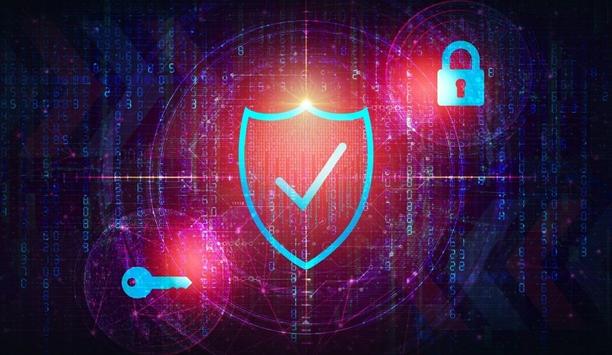
A modern guide to data loss prevention
Download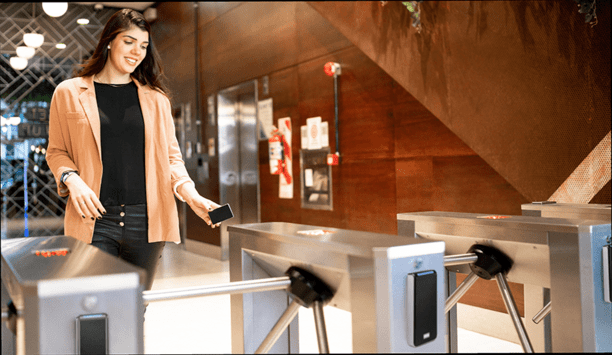
The truth behind 9 mobile access myths
Download
7 proven solutions for law enforcement key control and asset management
Download
Access control system planning phase 2
Download
Security practices for hotels
Download



















